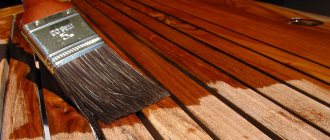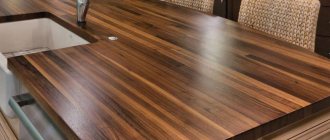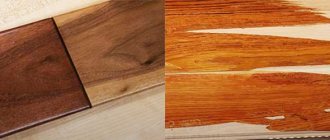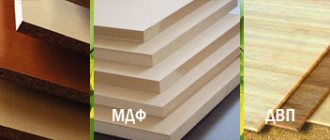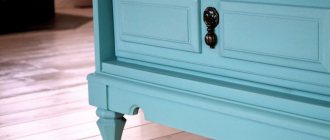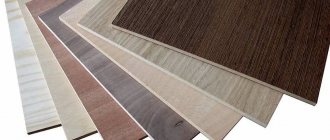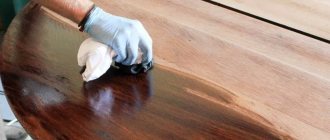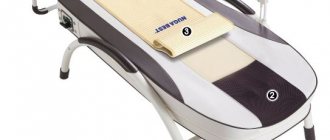Glaze for wood - application features
Wood is a very popular construction and finishing material, environmentally friendly and natural, pleasant to the touch and responds well to the application of different types of coatings. But wood has this peculiarity, or rather, the fact that it is molded with porosity, and therefore, after a while, due to the ingress of moisture, it can begin to rot, deteriorate, become covered with fungal plaque and mold. Wood glaze is a new product that has impregnation properties and also protects the material from external influences.
By azure we mean a glazing composition that helps strengthen the surface and also does not change the original structure of the material. It is required to extend the life of wood products and objects made from lumber. Moreover, it is important for improving the appearance of wood. The glaze has an antiseptic effect, and therefore helps prevent the appearance of fungus, beetles that undermine the wood, as well as the formation of unsightly blue stains.
Why do you need azure?
By azure we mean a glazing composition that strengthens the surface without changing the original structure of the material. It is designed to extend the life of wood products and objects built from lumber. In addition, it is needed to improve the appearance of wood.
Glazing compounds have an antiseptic effect, strengthen wood and improve appearance
Azure has an antiseptic effect, therefore it prevents the appearance of fungus, the infestation of wood-boring beetles, and the formation of unpleasant blue discoloration. The composition has proven itself especially well in relation to soft wood, which in its natural form does not last long and requires the mandatory application of a protective coating. Impregnation penetrates into the deep layers of the material, strengthens the fibers, making them less susceptible to aging and cracking.
The use of glazing compounds prevents damage to construction projects from ultraviolet radiation and precipitation. Some types of glaze are called “filmless impregnations”, because after treatment the vapor permeability of wood remains at the same level, but excess moisture evaporates, and the microclimate in the room improves.
Thus, the use of azure in the processing of timber, logs, and boards makes it possible to protect them from negative damaging factors, while any material becomes stronger, more attractive, and more durable.
Advantages and disadvantages
There are not many disadvantages to the universal glazing composition for finishing decorative surfaces:
- difficulties in repairing damaged areas, since to properly repair them you need to have professional skills;
- high costs.
The advantages of glazing paint are several times greater:
- high strength decorative coating;
- resistance to sunlight, protection against fading of the surface;
- increased resistance to scratches, impacts, abrasion;
- giving additional strength to the decorative plaster coating;
- the possibility of using detergents to clean walls;
- harmlessness and environmental safety of decorative glaze varnish for plaster made with water;
- uniform laying on both flat and embossed walls;
- Possibility of removing glaze varnish with a solvent.
Types of glaze for wood
Depending on the base, wood glaze can be water-based, oil-based or solvent-based. The characteristics of different types of impregnations are as follows:
- Aquatic. Water acts as a solvent in them. The composition also includes light-resistant pigments, biocidal substances, and acrylic in the form of a dispersion. Lazuli penetrates wood perfectly (the penetrating ability is the highest among all means). They provide long-term protection from negative influences, are safe for human health, and are suitable for use in any premises, even in children's rooms, baths, and saunas. Due to long-term storage, sediment may form at the bottom of the azure, but to restore its properties, simply shake the bottle.
- On solvents. Such compositions are most resistant to weather changes, precipitation, and provide a high degree of protection against UV radiation. Due to the presence of organic solvents or alkyd varnish, toxic substances evaporate before the glaze is completely dry, so they are usually used for outdoor work. The impregnations of this group include special persistent pigments that beautifully highlight the structure of the wood.
- Oily. They are multicomponent compositions based on castor, flaxseed, sunflower, orange oil, rosin ester, and vegetable alcohols. Such glazes prevent the appearance of fungus, prevent yellowing and blueing of the wood, and favorably emphasize the structure of the fibers. Many oil products are colorless, while others contain various pigments to add a richer tone to wood products.
Based on consistency and degree of fluidity, all glaze compositions are divided into the following groups:
- Thin-layer (liquid-flowing). Quickly and deeply penetrate between wood fibers, giving it a liquid texture. Due to strong absorption, a characteristic film does not form on the surface of lumber. Such glazes are ideal for elements that are not resistant to deformation (lining, picket fence), as well as for products with complex shapes.
- Medium-layer (intermediate). They have a higher density, harden on the surface in the form of a thin film, since they penetrate less well into the porous structure of the base material. However, these impregnations better protect the wood from the negative effects of the external environment. They are well suited for structures that undergo slight deformation during operation (various frames, beams).
- Thick-layer (thick-flowing). After drying, a durable film is formed on the surface of the wood. They are used only on products that are not subject to deformation (door blocks, interior finishing elements - block house, imitation timber), and are also excellent for protecting facades and structures outside buildings.
Azure for interior decoration
Glazing compounds for work inside buildings and structures can be used on new and old wood, previously cleaned of paint and varnish coatings. Most often they are applied to:
- window frames;
- door jambs;
- floor;
- ceiling beams;
- railings, staircase steps;
- Wall panels;
- furniture;
- decor
Such glazes are suitable not only for natural wood, but also for MDF, plywood, chipboard, and veneer. Most often they are water-based and contain waxes and resins that give the wood a varnished appearance. Impregnations for interior work help hide minor defects in the base, preserve the natural appearance of wood and emphasize its beauty. Color pigments are often added to the compositions, providing the material with even greater decorative properties. Some azures have a special purpose - due to their environmental friendliness, they are used to cover children's furniture, toys and even dishes.
Azure for exterior use
Such impregnations are created on the basis of alkyd resins and solvents and contain oils and natural waxes. The finished coating will be durable and protect the wood surface from ultraviolet radiation, precipitation, and temperature changes. The highest quality glazes guarantee protection for up to 10-25 years. Most azures for exterior use contain pigments, since they are used to process fences, building facades and serve as a finishing (decorative) layer.
Types of glazing compounds
All paint and varnish materials can be divided into two large groups: covering and glazing. The first completely change the appearance of the surface, smoothing it and covering it with a continuous opaque layer of color. The latter change only the color, leaving the pattern and texture visible, and often emphasizing them. Among them there are compositions with different properties and purposes.
Paints
We can say about glaze paint that it is a translucent color composition that does not completely paint over the surface pattern. It changes its color, creating a translucent cover, as if the base was covered with colored glass.
The wood pattern is not painted over with glaze paint Source hozzi.ru
See also: Catalog of companies that specialize in finishing materials and related work
This paint is used for finishing inside and outside, when they want to protect and strengthen the surface, change its tone, but maintain the recognition of the material. This is especially true for wood, the natural color of which may not fit into the style of the interior. With the help of paint, this problem is easily solved, but the tree remains a tree, demonstrating its natural beauty.
The glaze composition for decorative plaster with a pronounced relief is selected so as to create a beautiful play of colors that do not argue with each other, but emphasize the volume.
Light glazing of the relief beautifully sets off the golden base Source bauramix.kz
Like all paints and varnishes, such paints are produced on different bases - acrylic, oil-based polyurethane. For interior work, it is better to choose odorless compositions, and for exterior work, more weather-resistant paints based on a synthetic urethane base.
Lucky
The varnish glaze coating can be colored or colorless. But even colorless varnish creates a layer on the surface that shimmers in different shades. This happens due to the addition of special fillers, in the particles of which light is refracted at different angles and emphasizes the texture of the surface under the varnish.
On a note! Colored varnishes are used as is, and colorless varnishes can be tinted with colored pigments.
Regardless of color, varnishes come in matte, glossy and semi-gloss. Their main purpose is to cover decorative plaster, painted wallpaper and wooden structures on top of the applied decorative layer.
Varnish with mother-of-pearl effect Source kraskovik.ru
When figuring out what a glaze varnish is, any varnish can be included in this category, since they all form a transparent film that does not hide the texture of the base.
Which is better: glaze or oil for wood?
For protection and decoration, wood is equally often coated with both glazes and oils. The effectiveness of use is high for both types of products, but the results will be different. The main feature of azure is the creation of a beautiful glossy film. Oil, on the contrary, after absorption gives the surface a more matte appearance, so you should purchase it for wood processing if you want to achieve just such an effect.
Oil-based glaze will give wood a semi-gloss shine, while solvent-based impregnation will give it a glossy shine. Such compositions have a high degree of decorativeness and give even an old structure an attractive appearance. In addition, glossy azures always create a durable protective film, so they do an excellent job not only with aesthetic, but also with practical functions. It is more advisable to use glazes for products with unevenness and defects - they hide such imperfections, masking them behind radiance and smoothness.
How to choose a glaze composition
In fact, any varnishes, impregnations and oils can be considered glaze, since they do not mask the texture of the base. It's more difficult with paints. We found out what glazing paint is - it is a translucent color composition that changes the tone of the surface, preserving its pattern, but making it less pronounced and contrasting.
Select by color
The color of the coating, especially when working with wood, must be selected experimentally. The final result does not always match the color of the samples in the store, as it depends on many factors:
- type of wood, its absorbent properties;
- the original color of the base, changing over time;
- humidity levels;
- number of layers;
- grinding quality, etc.
Therefore, if possible, it is necessary to do your own test stains on scraps of used lumber.
There are such samples in stores for all paintwork materials Source eparket.com
For reference! For samples in stores they use light pine boards. If you have oak or larch, the final color will probably be a little darker.
By place of application
Glazing wood paint for interior use differs from exterior paint in composition. If you can use any compositions in a dry, heated room, making an exception only for those that evaporate harmful substances, then only paints with such characteristics as high moisture and frost resistance, resistance to fading, wear resistance, and good protective properties are suitable for the street.
Impregnation for external use Source sr-kolomna.ru
Therefore, water-based, acrylic or oil-based compositions are used inside the house, and polyurethane paints and varnishes, alkyd impregnations, and waxes are used outside, in damp and unheated rooms.
By cost
Oil and wax compositions are the most expensive, but they retain their decorative and protective properties longer. The cheapest are tinted antiseptic impregnations, but their price depends very much on the manufacturer and type of base.
Preparing the surface for impregnation
For a beautiful and high-quality application of impregnation, the base must be well prepared. Only in this case will the applied coating really last for many years. The method of processing wood depends on its age, condition, strength and type of structure:
- strong wood with old paintwork can be processed using a sandblasting machine or cleaned with a scraper or wire brush;
- It is recommended to wash new wood or contaminated material with water under pressure;
- carved items, patterned shutters, railings, fences should be cleaned with a grinding machine with a special attachment;
- materials with chips and cracks must be puttied with suitable mastic;
- wood with old glaze must be treated with a special etching compound to remove the coating;
- stains from pens, felt-tip pens, and other difficult-to-remove marks can be removed with aerosol chlorine-free solvents, ammonia, methyl alcohol, or by sanding.
After any type of pre-treatment, the base must be well polished with a machine or sandpaper to get rid of burrs and irregularities. Afterwards, the wood is wiped with alcohol, turpentine, and allowed to dry completely.
Why do you need to use wax and what types of wax it comes in?
Wax is most often used for plaster that imitates natural stone. The substance can be synthetic and natural. The first option is used for a durable matte finish, the second - to add gloss. The color of the wax is not always transparent, but special toners will give the substance the required shade.
For Venetian plaster, only the transparent version is suitable, since in this way all the nuances of the material are emphasized. If it is necessary to change the tone of the coating, use colored wax; for a brighter effect, a substance with a gold or silver tint is recommended, in this way gilding or metal coating is imitated.
Features of applying oil impregnation
Working with such materials is not difficult, the main thing is to strictly follow the manufacturer’s instructions. After finishing the preparatory stage, dry the wood well. This is especially important if the material is still raw and new. Areas where resin is released are treated with white spirit using a piece of cloth.
The azure is prepared for work by mixing it well in a jar (the mass must be absolutely homogeneous in consistency). Then the impregnation is applied with a brush, roller, or a spray bottle is used on large areas. Apply 1 or 2-3 layers with a period of time that is enough for the previous layer to dry. To dilute oil glaze, you cannot use organic solvents; they are diluted only with oil or alcohol.
How to paint, choice of materials and tools
The following types of varnishes are used for processing decorative textured plaster:
- Acrylic lacquer
. It is a homogeneous milky liquid based on acrylic resins and stabilizing additives. It dries quite quickly, creating a durable, colorless film with a slight matte effect. The varnish reaches its final strength after 14 days and does not turn yellow over time. The liquid is non-flammable, covers well, is easily tinted and adheres firmly to the wall. The varnish does not emit harmful substances into the air and has virtually no odor.
- Polyurethane varnish
. For the most part, the composition is intended for processing wood, but it is also possible to process plastered surfaces. This glaze varnish also dries quickly, forming a durable coating on plaster that is impervious to high humidity. Disadvantages include high cost and poor resistance to alcohol.
The main accessories used for glazing are brushes of various sizes.
Before applying the initial layer of glaze composition to the surface, you should prepare:
- paint brushes;
- scraps of fabric;
- spray gun;
- protective tape to cover the joints of walls and adjacent structures;
- rollers with rounded edges;
- sponges used to remove stains.
Wide brushes are necessary for processing large volumes of glazing composition in the vertical and horizontal directions.
If there are semicircular patterns on the surface of the walls, then in order to more thoroughly impregnate the decorative plaster, circular movements should be carried out.
Solvent-based glaze application
The procedure for preparing the surface will be similar to that described above. Be sure to sand the wood - this will help not only level the material, but also open its pores. You cannot apply glaze to products that have been previously painted or impregnated with other glazing compounds - first the coating is removed mechanically or chemically.
Solvent-based glazes almost never require dilution and usually have an optimal consistency. Excessive addition of thinner can ruin the composition! Work is carried out at temperatures above +5 degrees in the absence of bright sun, so it is best to paint wood in the early hours in summer or autumn. The glaze is applied with a roller or brush, unevenly painted areas are wiped with white spirit, and then treated again.
Why paint over decorative plaster?
Decorative plaster is considered to be the final coating, but craftsmen often paint it, cover it with glaze, wax or glaze varnish. This is done not only to add shine, but also to protect against the effects of destructive external factors. This treatment of plaster is a good protection against mechanical influences, fading and dampness.
Color variety of azure
There are various impregnations on sale that can enhance the natural color of wood or change it, for example, making inexpensive types of wood more noble. The shade of the coating can vary depending on the tone of the product itself, its density, and service life. In order not to make a mistake with your choice, it is recommended to first test the impregnation in a small, inconspicuous area, and only then proceed to the main stage of work.
The most popular and fashionable are light tones of azure - lightened, bleached shades of wood. You can even apply a transparent glaze to the base, but this does not always give the desired result. It is better to buy impregnation with the addition of special pigments or purchase bleaching glazes - products that lighten wood that is too dark. Typically, the lightest glazes are less resistant to ultraviolet radiation, so additional protective compounds must be applied over them.
Azure for wood. Standard colors
Manufacturers produce glazing compounds in a variety of tones. For example, the colors of Belinka brand impregnations include walnut, oak, pine, teak, larch and many other wood-like shades. Some glazes have a gray or beige tint and are used on old wood to visually renew it. You can change the tone yourself by adding gold, silver or colored pigment to the composition. The variety of colors, interesting visual effect, practicality and ease of use make azure incredibly popular among professionals and for home use.
Protective impregnations for wood
The final stage of finishing work on a wooden structure is to protect the wood from the destructive effects of the environment. Modern penetrating impregnations, which include various glazes, more effectively preserve wooden surfaces.
A distinctive feature of glazed wood impregnation is its silky-matte, scratch-resistant and sun-resistant coating on any wooden surface. To impregnate a wooden surface with glaze, no preliminary priming or finishing coat with paint or varnish is required.
How to tint varnish
If you can’t choose a color from ready-made compounds, you can purchase a colorless one and get the desired shade yourself. To give the desired color, special solutions are used - tints. Additionally, you will need scales, a mixing container and a drill with a mixer attachment.
- Pour the required amount of varnish into a container and weigh it.
- The maximum allowable amount of color is 10% of the base. It is advisable not to pour out all the paste at once, but add in small portions and then stir.
- Then apply the liquid to a sample of the coating and wait until it dries to evaluate the result.
It is important to remember that acrylic compositions may darken slightly after drying.
What threatens wood trim on the street?
First of all - moisture. Fluctuations in humidity provoke wood movement (swelling and shrinkage), as a result of which internal stresses appear. In addition, with high air humidity, colonies of mold and fungi actively multiply, which can damage the wood structure.
No less harmful are the effects of UV rays, temperature changes, and the accumulation of dust and dirt, from which the wood becomes coarser and loses strength. Therefore, manufacturers of paints and varnishes advise that after construction is completed, they immediately begin its protective and decorative treatment. The fact is that the further this process is delayed, the more contaminated and weakened the wooden surface will be and the worse the paint adhesion and the quality of the finished coating will be. This means that its periodic updating will have to be carried out more often, and it will cost more.
Alpina
Glazing paint forms a translucent coating.
Alpina
Cover paint forms an opaque finishing layer.
The best way to figure out which wood product you need
And now you need to process some kind of wooden surface. It’s easy to get confused in the offers, because different manufacturers often offer completely different compositions under the same name.
A simple rule will help you choose a product for wood: think about exactly what qualities you need to give to your specific wooden product or structure. If your wood product (or set of products) does not provide any function, it is a bad product.
What is a good product for outdoor wood?
What is important for a structure that will stand in the open air? Let's say it's a wooden bench, a gazebo, the facade of a house or a fence. To make a tree last a long time outdoors, you need:
- protect it from natural phenomena: always from ultraviolet radiation and moisture - the main factors that destroy the structure of wood;
- protect the tree from fungi (mold) and from certain insects that live in the tree;
- give the wood a beautiful appearance and color that will last as long as possible.
Which wood product is best to use in the house?
What qualities are important for preserving the wood of an interior door, a piece of furniture or lining that covers the kitchen walls? We need:
- Of course, a beautiful appearance and the ability to repaint, for example, a pine surface into fashionable rosewood;
- Safety, because no one wants to inhale substances harmful to health;
- Protection from moisture if wood is used in the bathroom or kitchen;
- Protection against fungi that will certainly appear under the influence of moisture;
- Harmony in the home - more and more often, psychologists and designers, in order to maintain a sense of peace and comfort, advise not to use shiny glossy surfaces in interiors (the advice is controversial, but still matte azures and paints look nicer in the house).
Conclusion: choose a product for wood based on its functions, not on its name.
Correction of application errors
To create an even protective layer on top of decorative plaster, you should pay attention to all stages of the work. At the final stage, defects and shortcomings that were made during decoration should be eliminated:
- It is necessary to evenly distribute the composition over the entire surface of the wall, while all areas must have the same thickness of the protective film.
- If the color in certain areas is very different from the main part, it is necessary to additionally cover the wall with a glazing compound. In this regard, you should buy material with a reserve.
- Before correcting mistakes, you should wait a few days for the mixture on the wall to acquire its final shade. If the color is very different, the area should be cleaned and then reapplied. To complete the work, it is better to use a small brush.
- In case of significant defects, it will be necessary to remove a section of the decorative coating along with the glaze material. After this, the finishing will have to be repeated.
- Minor differences in the angle of inclination can be disguised using a play of color. It is worth using paint, the shade of which smoothly turns into a darker one from bottom to top.
